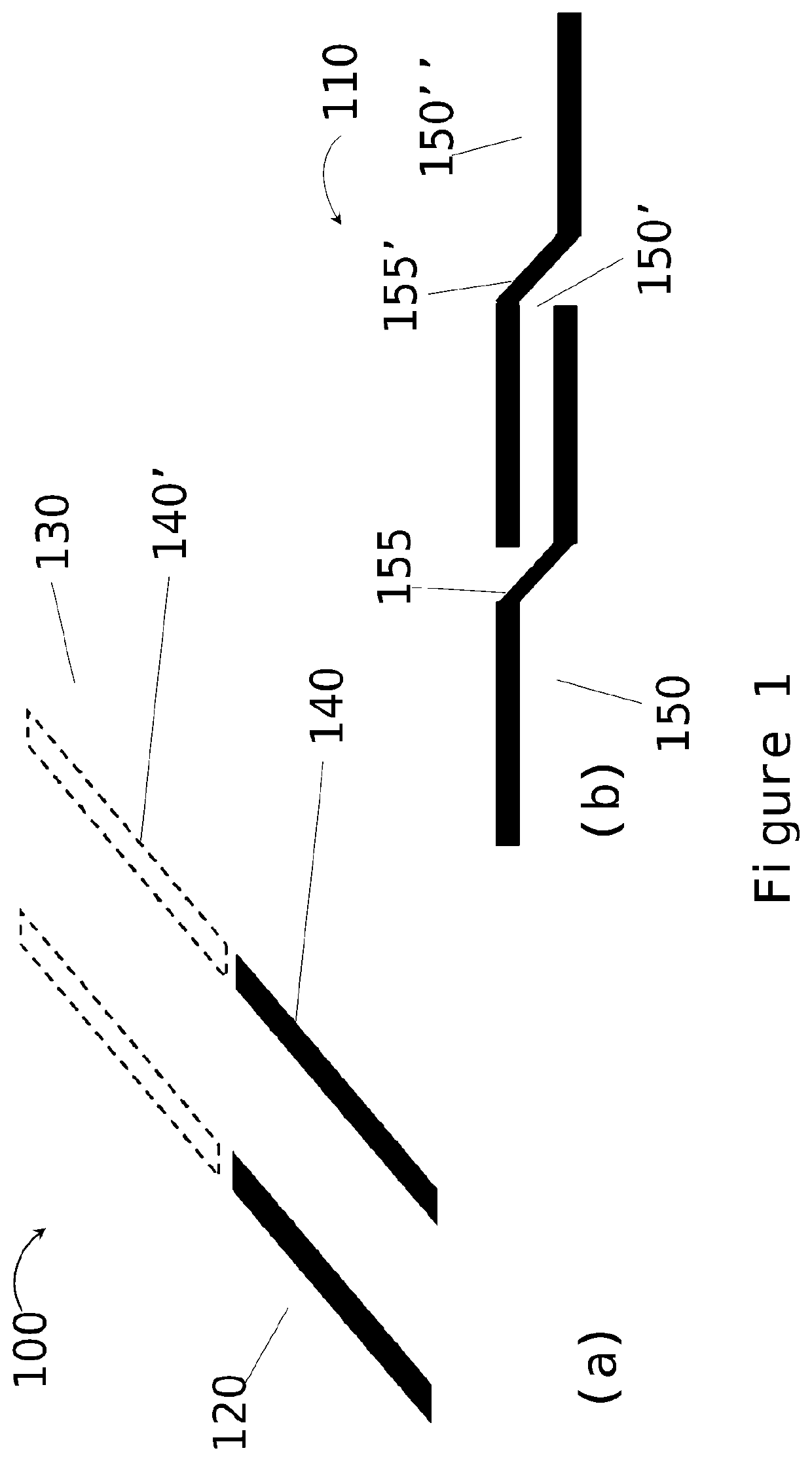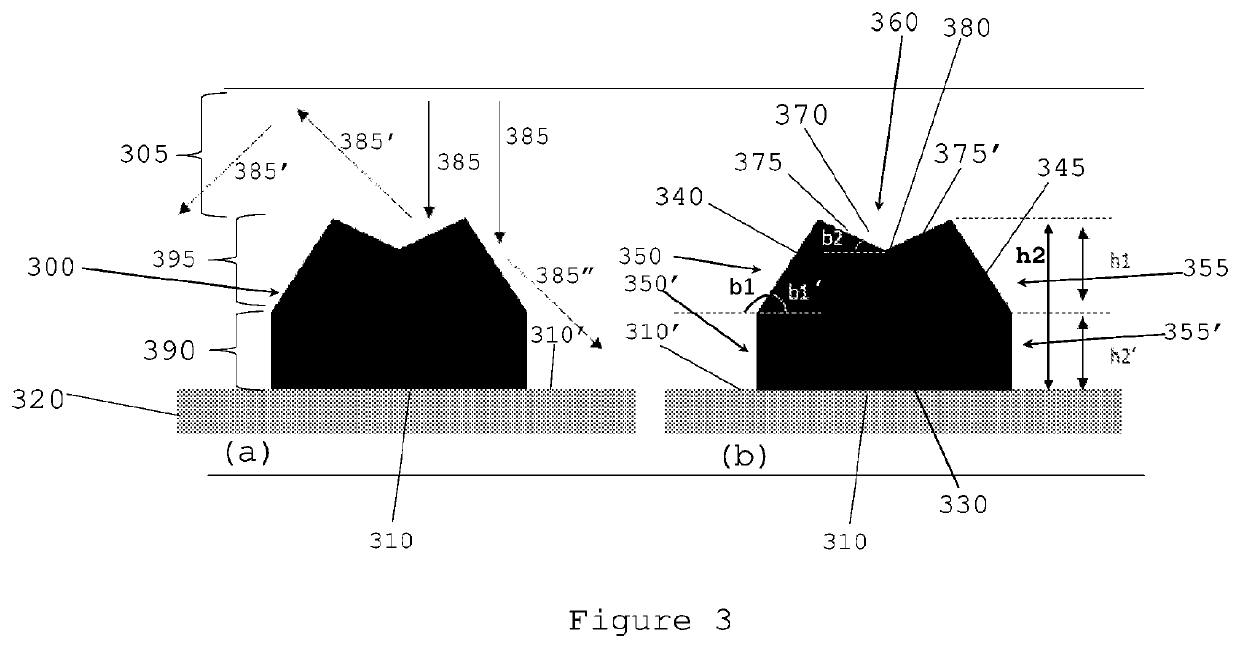A method of forming a device structure
- Summary
- Abstract
- Description
- Claims
- Application Information
AI Technical Summary
Benefits of technology
Problems solved by technology
Method used
Image
Examples
Embodiment Construction
[0094]Embodiments of the present invention thus relate generally to structured connectors, i.e. connectors having a non-circular cross-sectional shape, for positioning on, and electrically coupling to, a surface a device component, such as a solar cell, whereby the structured connectors further allow connecting device components, such as solar cells, within a device structure, such as a photovoltaic module.
[0095]Further, embodiments of a method for forming a device structure will be described, the method allowing the interconnection of device components within the device structure by means of structured connectors as provided in accordance with embodiments of the present invention.
[0096]In the following description, embodiments of a structured connector will in particular be described in relation to a solar cell structured connector for interconnecting solar cells within a photovoltaic module. Embodiments of a structured connector in relation to a method of forming a photovoltaic mo...
PUM
 Login to View More
Login to View More Abstract
Description
Claims
Application Information
 Login to View More
Login to View More - R&D
- Intellectual Property
- Life Sciences
- Materials
- Tech Scout
- Unparalleled Data Quality
- Higher Quality Content
- 60% Fewer Hallucinations
Browse by: Latest US Patents, China's latest patents, Technical Efficacy Thesaurus, Application Domain, Technology Topic, Popular Technical Reports.
© 2025 PatSnap. All rights reserved.Legal|Privacy policy|Modern Slavery Act Transparency Statement|Sitemap|About US| Contact US: help@patsnap.com



